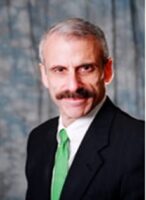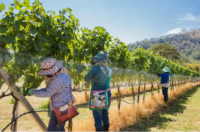
U.S. Supreme Court Narrowly Construes Permitting Program Under the Clean Water Act, Limiting EPA’s Authority
By Stuart Silverman
On March 4, 2025, in City and County of San Francisco v. Environmental Protection Agency (“City and County of San Francisco”), the Supreme Court ruled in a 5-4 decision that the U. S. Environmental Protection Agency (“EPA”) acted without statutory authority for the regulation of water pollution under the Clean Water Act (“CWA” or “the Act”). In its decision, the Court construed the 2019 CWA water discharge permit issued for the City and County of San Francisco as imposing extra-legal permit requirements for the control of water pollutants. Those requirements were contrary to the effluent limitations approach mandated by Congress when it enacted the Act. In so ruling, the Court reversed the Ninth Circuit.
Background
Federal involvement in regulating water quality has a long history, stretching back to 1948 when Congress passed the Federal Water Pollution Control Act (“FWPCA”). Under that statute, amended numerous times, the federal role in water quality grew through the years. Its basic approach was to identify a body of water with substandard water quality. To prove an entity was responsible for the pollution, EPA worked backwards, to hold a particular entity responsible. This approach proved to be unworkable, particularly when it came to enforcement efforts. EPA v. California ex rel. State Water Resources Control Bd.
Thus, in 1972, Congress enacted the CWA which exemplified a new framework for the federal water quality program for entities discharging pollutants into the waters of the United States. The CWA was a stark departure from its predecessor federal program to control water pollution. The infirmities evident under prior law motivated Congress to put in place a new regulatory regime, a fundamentally different approach, to control water pollution. EPA v. California ex rel. State Water Resources Control Bd.
Specifically, under section 1342 of the Act, Congress mandated a new permit requirement under the “National Pollutant Discharge Elimination System,” (“NPDES”) that imposes “effluent limitations” for pollutants and other conditions on “point sources” of water discharges. The effluent limitations imposed on entities are established under section 301 of the Act. Effluent limitations are defined under section 1362(11) of the Act to limit the “quantities, rates, and concentrations of chemical, physical, biological, and other constituents.”
Aside from effluent limitations, permits can impose certain best practices, or narrative conditions. These include, for example, testing, record-keeping, and reporting with which the permittee must comply. Permit violations can lead to the imposition of hefty monetary civil penalties and criminal liability.
As explained by the Supreme Court in EPA v. California ex rel. State Water Resources Control Bd. (“California“), the CWA distinguishes between water quality standards, applicable for navigable waters, and effluent limitations which impose restrictions for discharges from point sources into those waters. The Court in California distinguished between the regulatory regime that existed prior to the CWA, and the one that Congress enacted in 1972. Under prior federal law, individual discharges of pollutants into navigable waters were regulated by water quality standards. Individual entities were liable whose discharge caused or contributed to the reduction of the quality of navigable waters below the established water quality standards. As the Court explained, it was determined that, in practice, this scheme was not effective. This was so since prior law focused on overall quality of navigable waters which, by statutory design, made it difficult to enforce standards that individual polluters were required to meet. Thus, enforcement occurred only after a waterbody was “overpolluted.” At that point, it was difficult for enforcement authorities to pinpoint exactly which party was responsible for the pollution. This “backward-looking” policy regime was discredited.
Under the CWA, water quality standards for waterbodies are relegated a central role. The Act requires EPA to set water quality standards. These standards act as guides in setting effluent limitations in NPDES permits. Taken together, under the CWA, water quality standards and effluent limitations have different yet complementary roles. Significantly, where an NPDES permitholder is in conformance with the effluent conditions in the permit, then the permitholder is deemed in compliance, and not subject to enforcement proceedings. Under this approach, a permitholder is given a “permit shield” under section 1342(k) of the Act. This is so even where the effluent discharges, in conformance with the permit, are discharged into navigable waters already in violation of existing water quality standards.
In City and County of San Francisco, the matter under review before the Supreme Court involved the City and County of San Francisco’s combined wastewater treatment facility, the “Oceanside facility,” that processes both wastewater and stormwater. On occasion, because of heavy precipitation, a combination of wastewater and stormwater exceeds the capacity of the treatment facility. This results in discharges of untreated water, including raw sewage, into the Pacific Ocean.
Other municipalities have combined wastewater treatment facilities that have untreated discharges during heavy precipitation similar to San Francisco’s Oceanside facility. To address this, the EPA in 1994 adopted a policy. This policy established a two-phase permitting process. It specified minimum controls, and the development and implementation of a long-term plan. In 2000, Congress incorporated the policy into law under section 1342(q)(1).
In 2019, a renewed permit was approved for the Oceanside facility. For the first time, two new separate requirements were imposed, known as “end-result” requirements. Specifically, the permit prohibited the treatment facility from making any discharge that “contribute[s] to a violation of any applicable water quality standard” for receiving waters. The other requirement states that the city cannot perform any treatment or make any discharge that “create[s] pollution, contamination, or nuisance” as defined by the California Water Code. This permit was approved by the California Regional Water Quality Control Board and EPA. The “end-result” requirements were challenged in the litigation as contrary to law, and the subject of review by the Supreme Court.
The Supreme Court’s Decision
The central inquiry before the Supreme Court was section 1311(b)(1) of the Act. The Court parsed the text of that section, considering its context and the history of the CWA. The majority opinion explained that section 1311(b)(1), subparagraphs (A) and (B) require compliance with effluent limitations set forth in an NPDES permit, based on what can be achieved using specified technologies. When technology-based limitations are not sufficient, then an NPDES permit can also include water quality-based limitations under subparagraph (C) of section 1311(b)(1). The Court made clear that no interpretation of subparagraphs (A) and (B) under section 1311(b)(1) supported imposition of “end-result” requirements in a permit. As to subparagraph (C) of section 1311(b)(1), the Court read the text as mandating “any more stringent limitations” necessary to “meet” or “implement” certain water quality or treatment standards imposed under federal or state law. The text of subparagraph (C) speaks of a “limitation.” The Court emphasized that limitations under subparagraph (C) may be imposed in numerical and non-numerical (narrative) form. The Court construed the term “limitation” as a “restriction or restraint imposed from without, as by law.” This contrasts with language that directs a permittee to meet an end result that must be achieved, with the permittee to figure out the means to accomplish this. That latter proffered interpretation does not pertain to imposing a limitation that comes from without by law, which, in the Court’s view, is the purpose of subparagraph (C). The Court thus rejected imposing “end-result” permit requirements under subparagraph (C) as favored by the government permit issuing authority.
The Supreme Court emphasized that imposing “end-result” permit requirements would be directly contrary to the underlying purpose of the CWA, to discard the ineffectual regime under the FWPCA, and impose permit requirements on polluting point sources. Thus, the majority opinion held that the federal and state permitting authorities exceeded statutory authority in the issuance of the 2019 permit governing the city’s combined wastewater treatment system at the Oceanside facility.
The Supreme Court rejected a reading of the CWA that would allow an “end-result” approach on another ground, the permit shield under section 1342(k). The Court explained that the permit shield deems a permittee in compliance with the CWA if it conforms to the terms of the permit issued to it. Any reading of the CWA that embraces an “end-result” view would thwart the finality of the permit and the protections Congress intended to afford a permittee through the permit shield. The dire implications arising from “end-result” permitting were spelled out by the Court. A permittee could “diligently implement” the specific identifiable terms of the permit, yet be exposed to liability for any drop in water quality in its receiving waters. The harshness of this result would be magnified where there are discharges from more than one source, with no way to attribute, or apportion, the decreased water quality to a particular entity. The Court referred to this as the “multi-discharger” problem.
Justice Barrett filed an opinion dissenting in part, in which Justices Sotomayor, Kagan and Jackson joined. They took issue with the majority view that the government permitting authorities lacked statutory authority under section 311(b)(1)(C) to impose “end-result” limitations.

About the Author: Stuart Silverman is a licensed attorney in Washington, D.C. He was an attorney with the U.S. Department of Health and Human Services, Office of the General Counsel, and the Office of the Inspector General for the District of Columbia Government, Medicaid Fraud Control Unit. Mr. Silverman was previously associated with the law firm Greenberg Traurig. He has written numerous articles and appeared on panels at conferences addressing a wide range of topics on health care law. Early in his career, he was an attorney with the U.S. Environmental Protection Agency.






















